#historical racism
Text
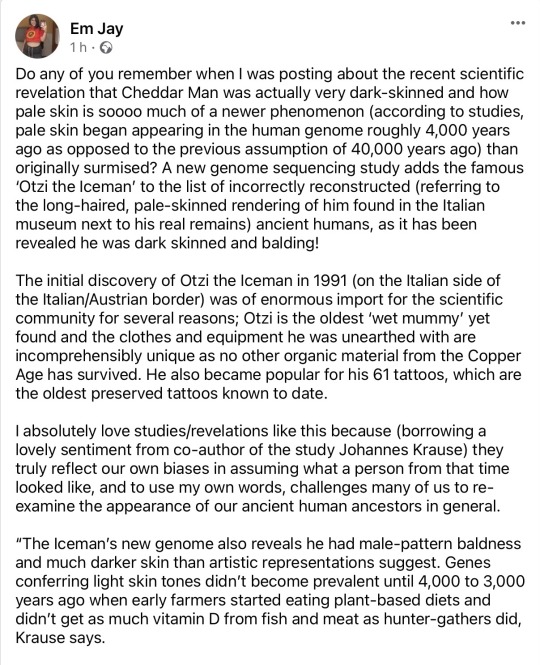


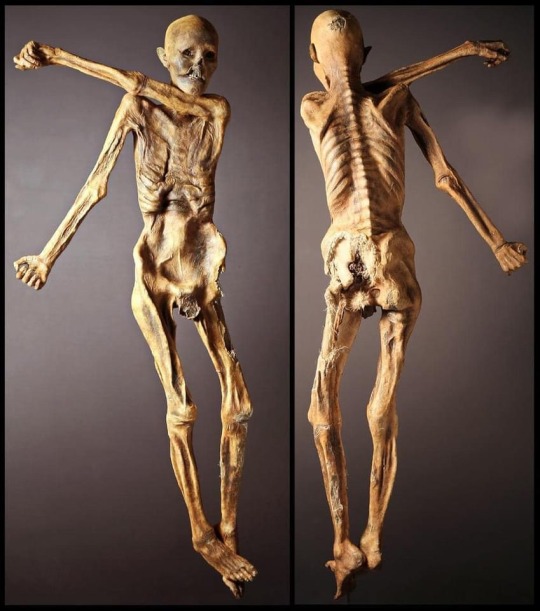
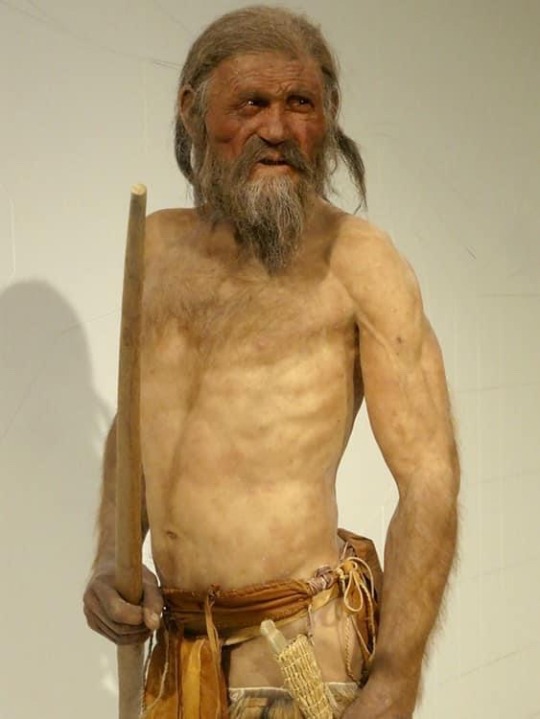
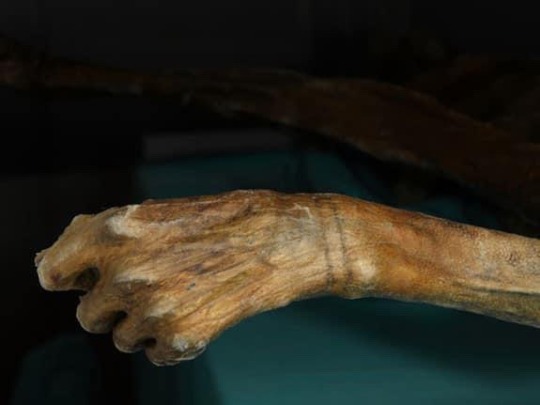
ID: a Facebook post by Em Jay:
“Do any of you remember when I was posting about the recent scientific revelation that Cheddar Man was actually very dark-skinned and how pale skin is soooo much of a newer phenomenon (according to studies, pale skin began appearing in the human genome roughly 4,000 years ago as opposed to the previous assumption of 40,000 years ago) than originally surmised? A new genome sequencing study adds the famous 'Otzi the Iceman' to the list of incorrectly reconstructed (referring to the long-haired, pale-skinned rendering of him found in the Italian museum next to his real remains) ancient humans, as it has been revealed he was dark skinned and balding! The initial discovery of Otzi the Iceman in 1991 (on the Italian side of the Italian/Austrian border) was of enormous import for the scientific community for several reasons; Otzi is the oldest 'wet mummy' yet found and the clothes and equipment he was unearthed with are incomprehensibly unique as no other organic material from the Copper Age has survived. He also became popular for his 61 tattoos, which are the oldest preserved tattoos known to date. I absolutely love studies/revelations like this because (borrowing a lovely sentiment from co-author of the study Johannes Krause) they truly reflect our own biases in assuming what a person from that time looked like, and to use my own words, challenges many of us to re- examine the appearance of our ancient human ancestors in general. "The Iceman's new genome also reveals he had male-pattern baldness and much darker skin than artistic representations suggest. Genes conferring light skin tones didn't become prevalent until 4,000 to 3,000 years ago when early farmers started eating plant-based diets and didn't get as much vitamin D from fish and meat as hunter-gathers did, Krause says.
“As Ötzi and other ancient people's DNA illustrate, the skin color genetic changes took thousands of years to become commonplace in Europe. 'People that lived in Europe between 40,000 years ago and 8,000 years ago were as dark as people in Africa, which makes a lot of sense because [Africa is] where humans came from," he says. "We have always imagined that [Europeans] became light-skinned much faster. But now it seems that this happened actually quite late in human history!" (excerpt in quotations from Science News article by Tina Hesman Seay) Below are photos of Otzi, the first taken in 1991 shortly after he was discovered by 2 hikers, his naturally mummified body after he was carefully unearthed from the ice and his incorrect/false rendering with pale skin of 2011, and I hope to return to add a correct/more accurate rendering of him if/when a new one is made!”
Photos show 1) a pair of light-skinned, brown-haired hikers with brown beards, dressed in very 1980s clothing, with the exposed body of Otzi in situ in the ice where they found his body; 2) two photographs of Otzi’s preserved body from the top and back, 3) a close-up photo of Otzi’s preserved hand 4) an inaccurate reconstruction of Otzi in life, showing him as a light-skinned white man.
#otzi#otzi the iceman#historical racism#scientific racism#prehistoric humans#human physiology#whiteness is a construct and a really shitty one we should do everything possible to denaturalise and deconstruct#whiteness is a construct#male pattern baldness
37 notes
·
View notes
Text
104 notes
·
View notes
Text
okay.......... the open source translator decided to put in the n slur where there was no n slur. The original sentence is bad, but not on the level of the actual literal n slur.
Anyways. both instances been removed from the translated documents.
6 notes
·
View notes
Text
Racism is still alive and well with a throbbing heartbeat in many communities 😒
3 notes
·
View notes
Text
Read a post earlier* that clarified something I’ve been having trouble getting WRT OFMD and race: namely, why the topics of race and racism--which many people have compellingly argued are vital to understanding some of the key scenes, e.g, the Party Boat--are handled so obliquely. And the answer is--I think--to avoid drawing attention to the corner they’ve painted themselves into with the setting in general and the figure of Stede Bonnet in particular.
(*I didn’t do this as a reblog/reply because it’s the one that starts out, “I’m not posting this in the tags, but...”; was thinking of linking it, but now I’ve misplaced it.)
So the first difficulty, that this (Doylist) reading solves is the one from the first time I blundered into the Race in OFMD Conversation: namely, there is a decent amount of evidence to support a reading of race-blind casting for the Blackbeard character. Several people have patiently explained to me why that reading can be hurtful to fans of color, and I pretty much get it. (And also agree that on balance, there’s more evidence for reading the character as a man of color.) But, I’m sorry, there are things about the show for which race-blind casting would be a satisfactory explanation--I’ll lay those out in more detail it if somebody asks. My point now, is that there’s a more compelling explanation.
So, then, the question is, why? Why, for instance, when Ed is talking about the violent caricature of him in the History of Pyrates book, is his list of Stereotypically Violent Others just about the whitest such list imaginable? (Vikings, Vampires, Clowns--all known for being quite pale.) Why does the French captain say “Donkey” when there’s, you know, another animal that would make it 100% unambiguous that this is a racist insult and that Ed is hearing it as such? Why not telegraph this stuff more clearly?
Ed’s race in the show is almost as subtextual as his queerness would be in a typical mainstream genre show. As subtextual as, say, Xena and Gabrielle. If you know, you know, but if you don’t, it’s possible to miss it. (I did--or at least misread it--and I flatter myself that I’m about as informed on race as your average white liberal.)
(Note: If your introduction to the concept “subtext” primarily from the “buttsex” joke, please note that “subtext,” on its own, is not an insult. t doesn’t mean thing you’re making up. It means something in the text that you have to interpret/dig for, rather than it being right there on the surface for anyone to see.)
And that’s a pretty unusual choice--especially if the show is trying to say things about race (as it very openly does in, say, the scene with the indigenous villagers).
One answer is, “That aspect of the show isn’t for you, as a white viewer; if you didn’t get it, you don’t need to get it.” But that’s not a very satisfying answer, because--as I worked through in another post--making a vital aspect of a character’s identity--an identity that viewers may share--deliberately difficult to discern is kind of an insulting move, whether that identity is sexuality, race, religion, disability. It suggests that that identity is either something that needs to be hidden, or something that isn’t important enough to make it into the plain text.
The more compelling answer is that, to be blunt, it’s a comedy, and slavery isn’t funny. It’s basically impossible, if we suppose the story to be set in anything resembling the real world, that a person in Stede’s position would not have gotten his wealth through slavery. (As I think most of us know, the actual historical figure was definitely an enslaver.)
It’s similarly unlikely that real people resembling Frenchie, Roach, Olu, and Ivan would have all not ever been slaves--you could come up with a compelling and plausible backstory, that does not involve slavery, for how any one of them ended up where they are in the show, but all four would stretch credulity to the breaking point.
Stede saying, “I sold a few slaves (instead of “a few acres”) for my own needs,” would not be funny. Frenchie saying, “I was a house-slave (instead of “in service”) for about a minute” would not be funny. There’s no way* that a show in this setting can be textually about race and still be funny. The most you can do is sort of glance at it out of the corner of the eye, and then get back to the pirate humor--bounce off “donkey” (and not the other word) straight to “skin him with the snail fork,” and don’t look back. If you look too hard at Ed’s race, it becomes a story about a man of color falling in love with a man who enslaves other men of color, and nobody wants to watch that**.
(*As far as I can tell! Maybe the show will surprise me and address race more directly in Season 2.)
(**I mean, I guess you could maybe pull it off as a serious drama where the main plot is the white guy realizing how fucked up his life is, becoming a staunch abolitionist, and figuring out a way to make amends to the people he and his family harmed? But definitely not as a sitcom about pirates.)
But I’m pretty sure the show’s oblique angle on race/racism is a deliberate choice to keep it on the tightrope of being a show with a diverse cast of characters (as well as actors), and situated in a place/time that was permeated with racism, and still have it be a comedy. It comes across as kinda weird, because it is.
#ofmd#race in ofmd#cw: racism#historical racism#please note that if your take is that the show doesn't relegate most questions of race to subtext#then we really don't have enough common ground to be talking about it#a white person's take on race in ofmd#if there's another tag I can use#for people who don't want to see white people's takes on race in OFMD to not see it#please let me know what that is and I'll add it
8 notes
·
View notes
Note
not to rain on a parade, but turns out that science lady whose book you want to check out? hella racist and thought only white people deserved education. in case that's something that might skew your opinion, as it did mine. they didn't, like, mention that in the post, but i think i know why! kind of a downer
Ah, thank you for the heads up on that, anon, I really appreciate it. Having looked up more about her now, eurgh, yeah, I've deleted the reblog of that post. It's depressingly unsurprising, given that there was a hell of a lot of racism and antisemitism going on with both a lot of suffragists and a lot of scientists of that time period, and I should have thought a little harder and at least clicked the link to the wikipedia article on the person in question rather than just immediately reblogging everyone going "woo yeah awesome historical woman in science!!!"
From a historical perspective, firsthand accounts by children and teens studying biology around that era are sort of relevant to something I'm trying to write at the moment. But that's a separate thing from celebrating the people involved or their beliefs, and I should've differentiated between "note to self, look this up as a possibly interesting source on that" and "wow how clearly awesome and funny and badass this person was." So thanks for catching me on that.
0 notes
Text
Just finished watching the #Swoop documentary on the Kardashian/Jenner cultural appropriation and blackfishing. It is INCREDIBLE, and parts of it are absolutely harrowing.
youtube
Swoop walks through why the blackfishing and blackface of the Kardashians is so dangerous and damaging, as well as highlighting the cultural appropriation of Japanese and Indian cultures by the Kardashians as well.
There is a harrowing story about Sarah Baartman and the Slave Trade which you NEED to watch. Watch the whole video-- but definitely, you NEED to watch the part about Sarah Baartman, the Paper Magazine photoshoot with Jean-Paul Goude, and more. (47:20)
And when you're done with that, read all about Sarah Baartman and the absolutely evil treatment she received.
#kim kardashian west#kim kardashian#khloe kardashian#kourtney kardashian#kylie jenner#kardashian jenners#blackfishing#cultural appropriation#swoop documentaries#historical racism#sarah baartman#Youtube#racism#oppression#Black history#Black hair#black women#appropriation of Black culture#spankie valentine#sex trafficking#sex trade#black fatigue#kimono#japanese culture#kim kardashian kimono#petty university#swoop#swoop youtube#Indian culture#race baiting
0 notes
Text
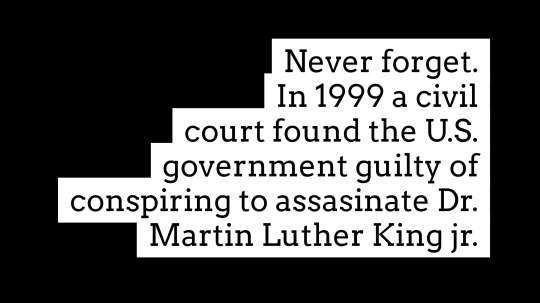
#mlk#assassination#civil rights#social justice#historical event#racial equality#legacy#racism#martin luther king jr#civil rights movement#social unrest#protests#riots#james baldwin#grief#racial injustice#historical reflection
430 notes
·
View notes
Text
The head of Google Gemini, Jack Krawczyk, today put out a very halfhearted apology of sorts for the anti-white racism built into their AI system, which, while not much, is at least some kind of an acknowledgement of how badly they've fucked up in creating a machine to rewrite history specifically to fit in with a very partisan present-day political agenda, and an assurance that they were going to do better moving forward:

But then folks started looking at the guy's Twitter page:

So I think it's safe to say Google's not going to be changing its political bias any time soon.
---------
Another interesting thing that has come to light today is that users have managed to get the AI itself to admit it is inserting additional terms the user does not ask for into the request so as to get specifically skewed 'woke' results:


364 notes
·
View notes
Photo


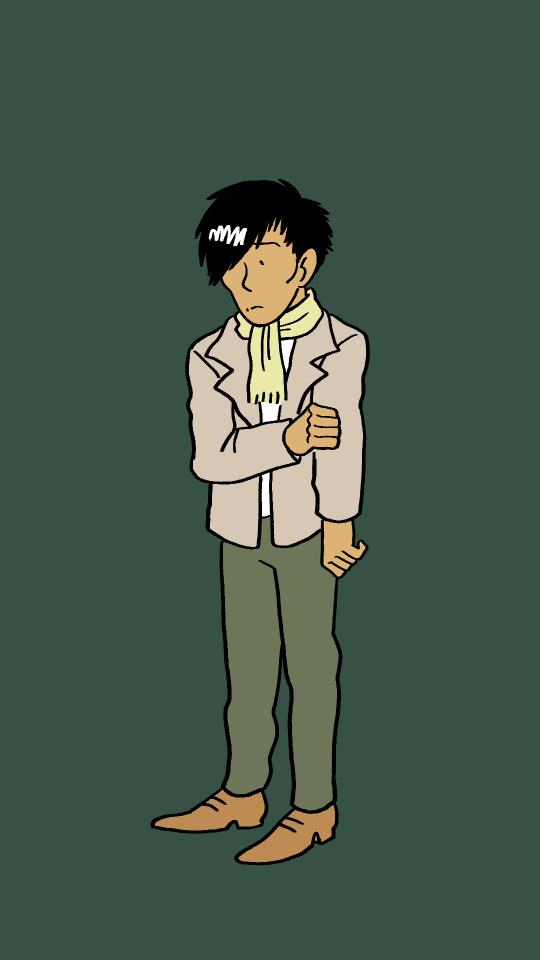
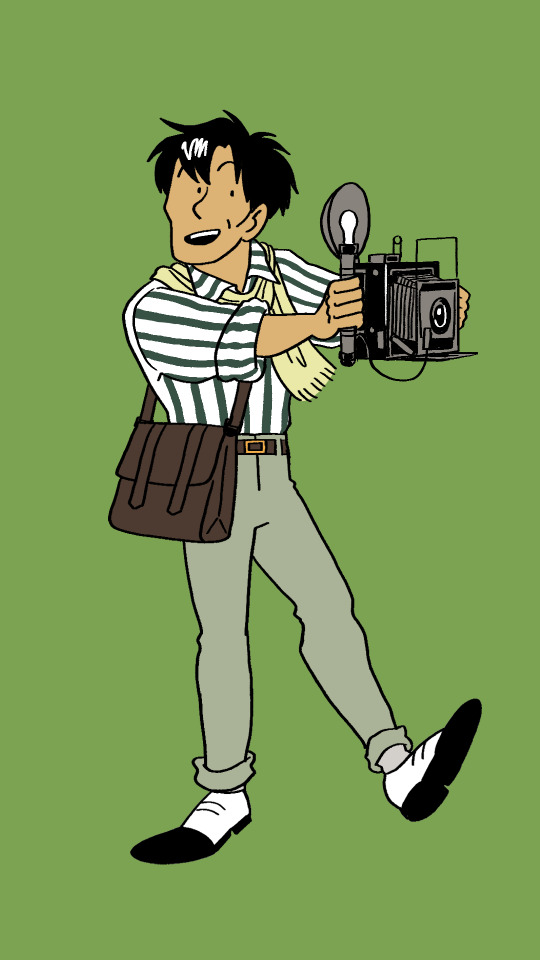
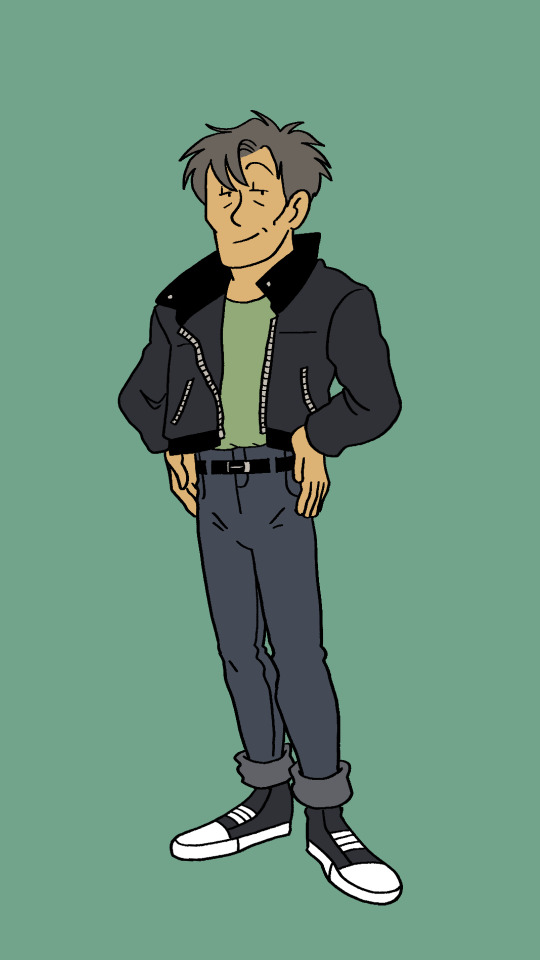

People have been asking for a Chang timeline post! Chang not only represents a turning point in the politics of the Tintin series, he also represents a sense of chronology in the otherwise floating timeline of the canon. While Tintin almost never discusses his past, Chang is a key part of his personal story in Tintin in Tibet.
I imagine him and Tintin being around the same age, with Chang being a few months younger.
Child - Chang had a happy early childhood being raised by his father and grandparents. He never mentions his mother when recounting his backstory to Tintin, so my main guesses are she either passed away or his parents separated before Chang was old enough to remember her. His father and grandparents taught him how to cook from an early age, and taught him the importance of solidarity and community, lessons Chang will hold onto the rest of his life.
Early canon - Chang is orphaned. This sudden loss causes him to act out. He turns to picking pockets and causing general mischief until an orphanage takes him in. Chang learns a lot of skills just to survive - he’s stealthy, he’s street smart and pretty decent at climbing. His experiences as a street kid taught him to be wary of authority.
The orphanage provides a brief period of stability until it is swept away in a flood. Until this point, Chang has felt pretty powerless in his life so just goes with the flow, so when Tintin drags him out of a river he doesn’t think twice about going along with him to break up a drug ring in The Blue Lotus. Going on this adventure with Tintin imbues him with a sense of empowerment and purpose he never felt before.
Student - The Wangs adopt him pretty quickly after he busts the drug ring with Tintin. It’s a sudden change he struggles to adapt to, with the Wangs being wealthy academics and Chang coming from a working class background there’s a significant culture clash.
Tintin leaves just as quickly and rarely contacts Chang, even as his journalism career takes off, leaving Chang lonely and heartbroken. Chang tries to send him letters but doesn’t know that Tintin moved out of Labrador Road.
Having missed out on education for a bit Chang struggles with school. He feels unworthy of the opportunities the Wangs try to provide him with and a part of him feels they only adopted him because they were dazzled by him taking down that drug ring, an achievement he increasingly feels he will never live up to again. He struggles with mental health issues, but finds solace in photography, his portfolio getting him a place at university despite his bad grades.
Young adult - In an attempt to try and help Chang’s mental wellbeing the Wangs decide to send Chang off to visit his uncles before he starts university, only for Chang to nearly perish in a plane crash in Tibet. Ironically, it’s this near death experience that shakes him out of it. Chang has a renewed enthusiasm for life, taking to travelling, dance and photography. Didi trains him in some basic martial arts so Chang can fend for himself.
Tintin makes an effort to stay in touch after having nearly lost Chang. The two repair their friendship, and Tintin has him stay at Marlinspike when Chang studies in Belgium for his second year of university. By the time Chang comes around, he’s had a growth spurt and has been working out - Chang is pretty haunted by his skeletal state from his near death experience in Tibet, so has been making an effort to recover.
After helping Tintin with a case, Tintin gets him a job at his paper as his photographer. Being Chinese he faces challenges in the workplace, and he uses his charm to be as personable as possible. Unlike Tintin, he frequents quite a few staff parties, and ends up pretty popular!
A couple of years later, Chang tries to unionise the staff at the paper. He and Tintin are outed as a couple and the two of them are fired.
Middle aged - After fighting fascists with the Marlinspike team during WW2 Chang and Tintin settle down in Belgium, with Chang scraping out some freelance photography work and a part time job at a portraiture studio. War in China causes them to lose contact with his adopted family.
While Tintin grows more cynical, Chang accepts the chaos of the world and mellows out a lot. He tries to be a supportive partner and makes extra effort to stay in touch with his uncles and cousins.
Elderly - Chang uses his skills in photojournalism when he gets involved in political activism. He and Tintin are finally able to reunite with Didi and his children in the 70s.
#fanart#tintin#adventures of tintin#chang#photoset#headcanon#historical fashion#death mention#homophobia mention#racism mention#my favourite design by far is the elderly one lol#look at the bumbag#look at the colourblock jacket#tinchang
944 notes
·
View notes
Text
Just a heads up about Killers of the Flower Moon
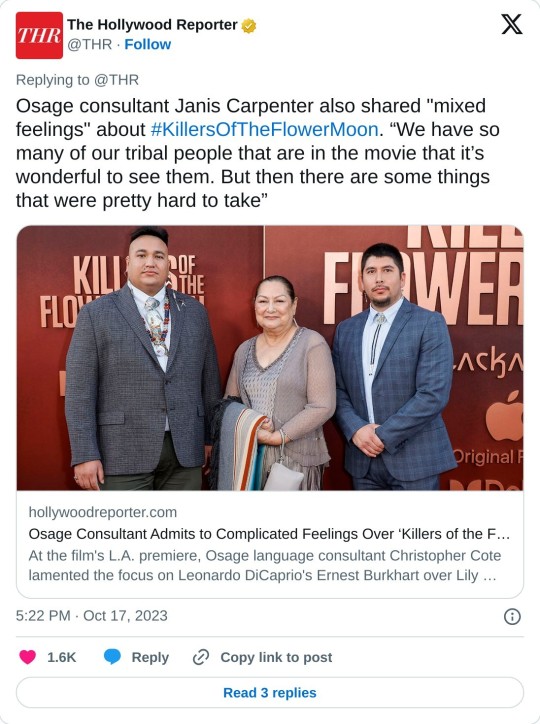
Here Osage language consultant Christopher Cote speaking about this:
#killers of the flower moon#martin scorsese#films#native american#indigenous culture#osage#settler colonialism#anti native racism#historical revisionism#yeah same. i was a little unnerved that it was from the pov of the white criminals#and even made the guy played by dicaprio to be sympathetic#media criticism
447 notes
·
View notes
Text
It burns me up that they perpetually build roads, lakes, housing developments etc. over historical Black cemeteries in the American south. It really does. The thin excuse of “urban development and progress” doesn’t change the fact that is 9/10 times you hear about a cemetery being relocated or otherwise desecrated, it was a cemetery for POC. It is an act of willful, disgusting racism and targeted disrespect towards their lives and their loved ones and descendants.
In Roanoke, I-581 is built over Big Lick Cemetery, a historical Black cemetery dating back to the 1890s containing the graves of more than 700 Black men, women and children, most of whom moved to Roanoke during The Great Migration when it was a developing railroad town. These are the graves of the people who built the city. These are the graves of people who came to make a better life for themselves and their children. The graves of the formerly enslaved, their children, their children’s children. The cemetery contains a disproportionate amount of children, even for a cemetery dating from a time when childhood mortality was high. Stillborn babies, children who died of marasmus (malnutrition) or diseases like tuberculosis and typhoid due to inhumane and cramped living conditions.
There is a road built on top of them, babies, boys, girls, men and women and no acknowledgment of their lives. Remaining undisturbed graves are visible from the road, it’s surrounded by a chain link fence and marked from the road only by a wooden sign bolted to the fence. Driving by you could not fathom the size of the cemetery or its significance or the stories of the people interred there. It’s notoriously badly kept, grown up, covered in litter, graves that are less than a century old already obscured by plant growth.
Please be mindful of the Black and Indigenous cemeteries in your area, protect historical cemeteries, protest their destruction, volunteer with cleanup and survey efforts and always be conscious that plans to develop over them are not innocuous, not an unfortunate but necessary sacrifice so your town can have a new Sheetz and a 4 lane highway. It is an act of racism.
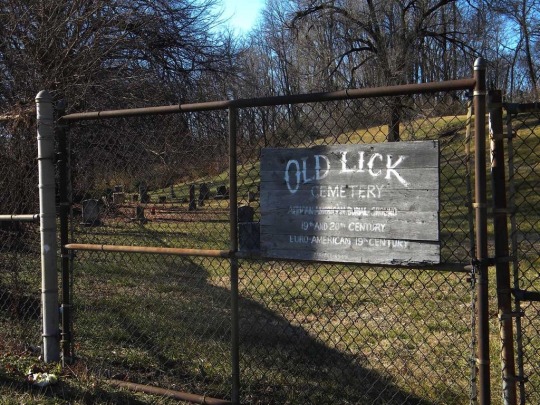
The next time you drive through Roanoke, think of them.
393 notes
·
View notes
Text
European history is not white


Someone commented this to a post I reblogged, which message is basically "we shouldn't venerate the Dead White Man HistoryTM and we should elevate other history too, but we still need to learn Dead White Man HistoryTM to understand the world today". It's basically a response to the attitude you sometimes come across in the internet that sees learning about those Dead White MenTM as not worth our time. And this person, who seems to be following this blog because they responded to my reblog, takes it as a personal attack against all white Europeans. For some reason. Well I take these comments as a personal attack against historical understanding.
Firstly, the post clearly didn't say you shouldn't venerate any European history, because not all European history is Dead White Man HistoryTM. Obviously this person thinks European history is white, which is not true, but surely, surely, they know it's not all men? Secondly, what is "west culture"? When did it start? There is not one western culture, not one European culture. The first concept of some shared Europeanness was the Christendom in Middle Ages, but it was not exactly the same as we think of Europe today, because it did not include the pagan areas, but it included a lot of Levant and parts of Central Asia, where there were large Christian areas. And Europe was not "very white" nor was the Christendom. The more modern concept of West was cooked in tandem with race and whiteness during colonial era and Enlightenment, around 17th to 18th centuries. And Europe was certainly not very white then. The western world also includes a lot of colonized areas, so that's obviously not white history. Thirdly, implying that asking white people to apologize for European history (which no one did ask) is as ridiculous as asking black people for African history is... a choice. Black people do exist in a lot of other places than Africa, which white people should be the ones apologizing for, and really white people also have a lot to answer for about African history. Lastly, if you think the quote "anyone who thinks those dead white guys are aspirational is a white supremacist" means you as an European are demanded to apologize for your existence, maybe - as we say in Finland - that dog yelps, which the stick clanks. (I'm sorry I think I'm the funniest person in the world when I poorly translate Finnish sayings into English.)
The thing is, there is no point in European history, when Europe was white, for three reasons. 1) Whiteness was invented in 17th century and is an arbitrary concept that has changed it's meaning through time. 2) Whichever standard you use, historical or current, Europe still has never been all or overwhelmingly white, because whiteness is defined as the in-group of colonialists, and there has always been the internal Other too. In fact the racial hierarchy requires an internal Other. 3) People have always moved around a lot. The Eurasian steppe and the Mediterranean Sea have always been very important routes of migration and trade. I've been meaning to make a post proving exactly that to people like this, since as I've gathered my collection of primary images of clothing, I've also gathered quite a lot of European primary images showing non-white people, so I will use this opportunity to write that post.
So let's start from the beginning. Were the original inhabitants of Europe white? Of course not. The original humans had dark skin so obviously first Europeans had dark skin. Whenever new DNA evidence of dark skinned early Europeans come out (like this study), the inevitable right-wing backlash that follows is so interesting to me. Like what did you think? Do you still believe the racist 17th century theories that white people and people of colour are literally different species? I'm sure these people will implode when they learn that studies (e.g. this) suggest in fact only 10 000 years ago Europeans had dark skin, and even just 5 000 years ago, when Egypt (an many others) was already doing it's civilization thing, Europeans had brown skin (another source). According to the widely accepted theory, around that time 5 000 years ago the Proto-Indo-European language developed in the Pontic-Caspian steppe, which extends from Eastern Europe to Central Asia. These Proto-Indo-Europeans first migrated to Anatolia and then to Europe and Asia. Were they white? Well, they were probably not light skinned (probably had brown skin like the other people living in Europe around that time), the Asian branch of Indo-European peoples (Persians, most Afghans, Bengalis, most Indians, etc.) are certainly not considered white today and a lot of the people today living in that area are Turkic and Mongolic people, who are also not considered white. I think this highlights how nonsensical the concept of race is, but I don't think Proto-Indo-Europeans would have been considered white with any standard.
Around Bronze Age light skin became common among the people in Europe, while in East Asia it had become wide spread earlier. This does not however mark the point when "Europe became white". During the Bronze Age there was a lot of migration back and forth in the Eurasian steppe, and the early civilizations around Mediterranean did a lot of trade between Europe, Africa and Asia, which always means also people settling in different places to establish trading posts and intermarrying. There were several imperial powers that also stretched to multiple continents, like the briefly lived Macedonian Empire that stretched from Greece to Himalayas and Phoenicians from Levant, who didn't built an empire but settled in North Africa, Sicily and Iberia. In Iron Age the Carthaginian Empire, descendants of Phoenician settlers in current Tunisia, build an Empire that spanned most of the western Mediterranean coast. Their army occupying that area included among others Italic people, Gauls, Britons, Greeks and Amazigh people.
Iron Age also of course saw the rise of the Roman Republic, and later empire, but it was preceded by Etruscans, who populated Tuscan, and possibly preceded the Indo-European presence. However, weather through trade and migration with other Mediterraneans or the continuing presence of darker skin tones of the early Europeans, their art quite often depicts darker skin tones too, like seen below in first two images. Roman Empire at it's height spanned from Babylonia to the British Isles. They recruited soldiers from all provinces and intentionally used stationed them in different areas so they wouldn't be too sympathetic to possible rebels or neighboring enemies. Historical sources mention black Nubian soldiers in British Isles for example. They also built a lot of infrastructure around the empire to ensure protection and easy transportation through trade routes inside the empire. During this time Jewish groups also migrated from Levant to both North-Africa and Europe. Rome even had non-European emperors, like Septimius Severus who originated from Levant and was Punic (descendants of Phoenicians) from his father's side, and who was depicted with darker skin (third picture below). Various ethnicities with differing skin tones are represented all over Roman art, like in the fourth picture below from hunting lodge in Sicily.

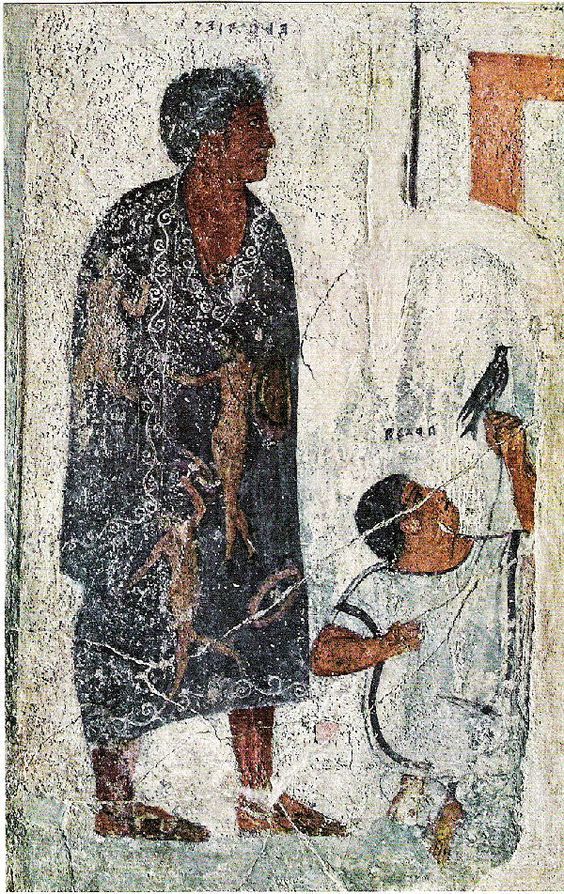


Eurasian steppe continued to be important source of migration and trade between Europe and Asia. Scythians, Iranic nomadic people, were important for facilitating the trade between East Asia and Europe through the silk road during the Iron Age. They controlled large parts of Eastern Europe ruling over Slavic people and later assimilating to the various Slavic groups after loosing their political standing. Other Iranic steppe nomads, connected to Scythian culture also populated the Eurasian steppe during and after Scythia. During the Migration Period, which happened around and after the time of Western Rome, even more different groups migrated to Europe through the steppe. Huns arrived from east to the Volga region by mid-4th century, and they likely came from the eastern parts of the steppe from Mongolian area. Their origins are unclear and they were either Mongolic, Turkic or Iranic origin, possibly some mix of them. Primary descriptions of them suggests facial features common in East Asia. They were possibly the nomadic steppe people known as Xiongnu in China, which was significant in East and Central Asia from 3rd century BCE to 2nd century CE until they moved towards west. Between 4th and 6th centuries they dominated Eastern and Central Europe and raided Roman Empire contributing to the fall of Western Rome.
After disintegration of the Hun Empire, the Huns assimilated likely to the Turkic arrivals of the second wave of the Migration Period. Turkic people originate likely in southern Siberia and in later Migration period they controlled much of the Eurasian steppe and migrated to Eastern Europe too. A Turkic Avar Khagenate (nation led by a khan) controlled much of Eastern Europe from 6th to 8th century until they were assimilated to the conquering Franks and Bulgars (another Turkic people). The Bulgars established the Bulgarian Empire, which lasted from 7th to 11th in the Balkans. The Bulgars eventually adopted the language and culture of the local Southern Slavic people. The second wave of Migration Period also saw the Moor conquest of Iberia and Sicily. Moors were not a single ethnic group but Arab and various Amazigh Muslims. Their presence in the Iberian peninsula lasted from 8th to 15th century and they controlled Sicily from 9th to 11th century until the Norman conquest. During the Norman rule though, the various religious and ethnic groups (which also included Greeks and Italic people) continued to live in relative harmony and the North-African Muslim presence continued till 13th century. Let's be clear that the Northern Europe was also not white. Vikings also got their hands into the second wave migration action and traveled widely to east and west. Viking crews were not exclusively Scandinavians, but recruited along their travels various other people, as DNA evidence proves. They also traded with Byzantium (when they weren't raiding it) and Turkic people, intermarried and bought slaves, some of which were not white or European. A Muslim traveler even wrote one of the most important accounts of Vikings when encountering them in Volga.
By this point it should already be clear that Medieval Europe was neither white, but there's more. Romani people, who originate from India and speak Indo-Aryan language, arrived around 12th century to Balkans. They continued to migrate through Europe, by 14th century they were in Italy, by 15th century in Germany and by 16h century in Britain and Sweden. Another wave of Romani migration from Persia through North-Africa, arrived in Europe around 15th century. Then there's the Mongol Empire. In 13th century they ruled very briefly a massive portion of the whole Eurasian continent, including the Eastern Europe. After reaching it's largest extent, it quickly disintegrated. The Eurasian Steppe became the Golden Horde, but lost most of the Eastern-Europe, except Pontic-Caspian Steppe. They ruled over Slavs, Circissians, Turkic groups and Finno-Ugric groups till early 15th century. The Mongolian rulers assimilated to the Turkic people, who had been the previous rulers in most of the steppe. These Turkic people of the Golden Horde came to be known as Tatars. Golden Horde eventually split into several Tatar khagenates in 15th century, when the khagenates, except the Crimean Khagenate, were conquered by the Tsardom of Moscovy. Crimean Khagenate was annexed by the Russian Empire in 1783. Crusades were a movement from Europe to Levant, but they also meant intermarriage in the the Crusader kingdoms especially between the European and Levant Christians, and some movement back and froth between these kingdoms and Europe, trade and a lot of movement back after the Crusader kingdoms were defeated in 13th century. Generally too trade across the Mediterranean sea was extensive and led to migration and intermarriage.
And here's some example of people of colour in Medieval European art, shown as part of the majority white European societies. First is from a 15th century French manuscript depicting Burgundy court with dark skin courtier and lady in waiting. Second one is from a Flemish manuscript from 15th century of courtiers, including a black courtier, going for a hunt. Third is a 15th century Venetian gondolier with dark skin.

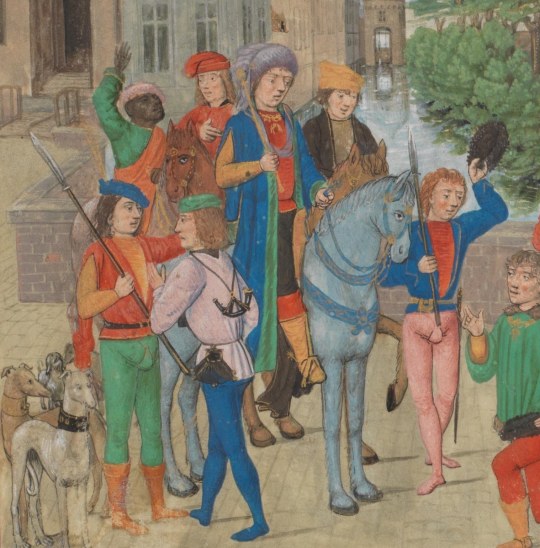

In Renaissance Era Europe was only increasing it's trade and therefore had even more connections outside Europe. The first picture below is Lisbon, which had strong trade relationship with Africa, depicted in late 16th century. People with darker skin tones were part all classes. Second image is an Italian portrait of probably a seamstress from 16th century. Third one is a portrait of one of the personal guards of the Holy Roman Emperor. Fourth image is a portrait of Alessandro de' Medici, duke of Florence, who was noted for his brown complexion, and the modern scholarly theory is that his mother was a (likely brown) Italian peasant woman.
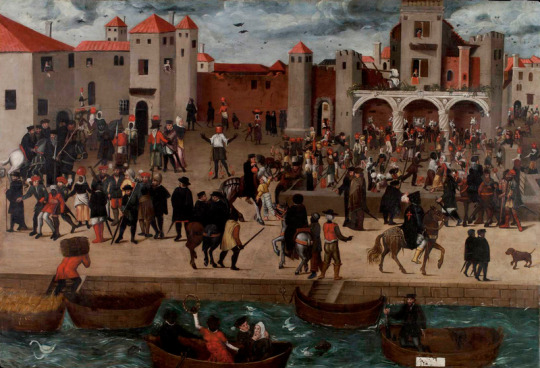

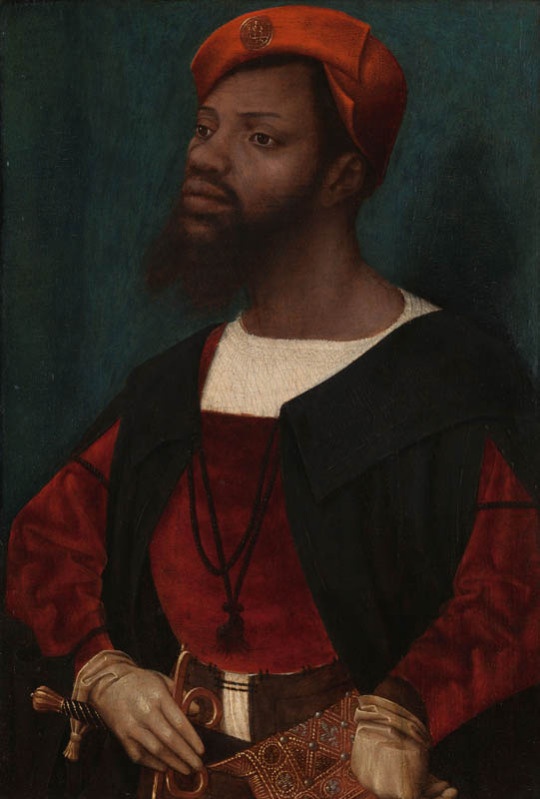

Colonialism begun in the Renaissance Era, but the wide spread colonial extraction and slavery really got going in the 17th century. Racial hierarchy was developed initially to justify the trans-Atlantic slave trade specifically. That's why the early racial essentialism was mostly focused on establishing differences between white Europeans and black Africans. Whiteness was the default, many theories believed humans were originally white and non-whites "degenerated" either through their lives (some believed dark skin was basically a tan or a desease and that everyone was born white) or through history. Originally white people included West-Asians, some Central-Asians, some North-Africans and even sometimes Indigenous Americans in addition to Europeans. The category of white inevitably shrank as more justifications for atrocities of the ever expanding colonial exploitation were required. The colonial exploitation facilitated development of capitalism and the industrial revolution, which led to extreme class inequality and worsening poverty in the European colonial powers. This eventually became an issue for the beneficiaries of colonialism as worker movements and socialism were suddenly very appealing to the working class.
So what did the ruling classes do? Shrink whiteness and give white working classes and middle classes justifications to oppress others. Jews and Roma people had long been common scapegoats and targets of oppression. Their oppression was updated to the modern era and racial categories were built for that purpose. The colonial powers had practiced in their own neighborhoods before starting their colonial projects in earnest and many of those European proto-colonies were developed to the modern colonial model and justified the same way. In 19th century, when racial pseudoscience was reaching it's peak, Slavs, others in Balkan, the Irish (more broadly Celts), Sámi (who had lost their white card very early), Finns, Southern Italians, the Spanish, the Southern French and Greeks all were considered at least not fully white. The Southern Europeans and many Slavs were not even colonized (at least in the modern sense, though with some cases like Greeks it's more complicated than that), but they looked too much and were culturally too similar to other non-white Mediterraneans, and they were generally quite poor. In many of these cases, like Italians, the French and Slavs, it was primarily others belonging in the same group, who were making them into second class citizens. All this is to highlight how very malleable the concept of race is and that it's not at all easy to define the race of historical people.
However, even if we would go with the racial categories of today, Europe was still far from being all white in this period. You had Roma, who certainly are not included in whiteness today, and European Jews, whose whiteness is very conditional, descendants of Moors in Southern Europe and Tatars and Turks in Eastern Europe and Turkey, which today is often not thought of as part of Europe, but historically certainly was. And then colonialism brought even more people into Europe forcibly, in search of work because their home was destroyed or for diplomatic and business reasons. There were then even more people of colour, but they were more segregated from the white society. Black slaves and servants are very much represented in European art from 17th century onward, but these were not the only roles non-white people in Europe were in, which I will use these examples to show. First is a Flemish portrait of Congo's Emissary, Dom Miguel de Castro, 1643. Second is a 1650 portrait of a Moorish Spanish man Juan de Pareja, who was enslaved by the artist as artisanal assistant, but was freed and became a successful artist himself. Third is a 1768 portrait of Ignatius Sancho, a British-African writer and abolitionist, who had escaped slavery as a 20-year-old. Fourth painting is from 1778 of Dido Elizabeth Belle, a British gentlewoman born to a slave mother who was recognized as a legitimate daughter by her father, and her cousin. The fifth portrait is of an unknown woman by (probably) a Swiss painter from late 18th century. Sixth is a 1760s Italian portrait of a young black man.

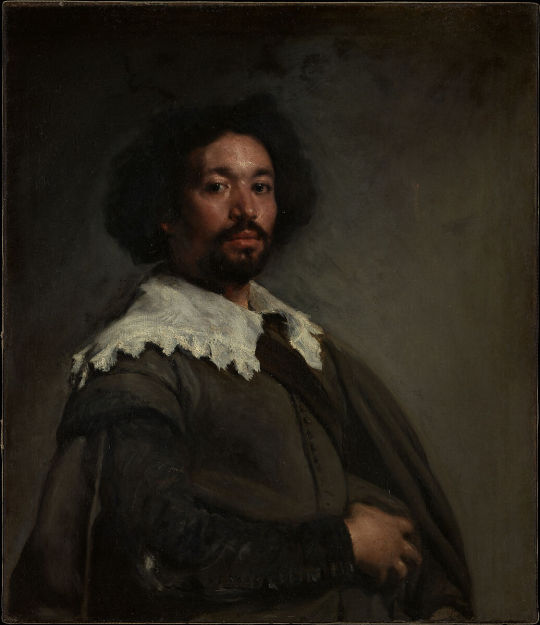
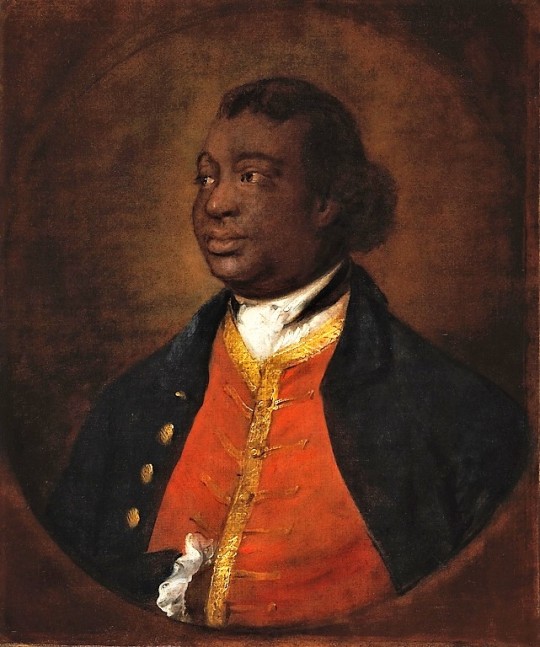
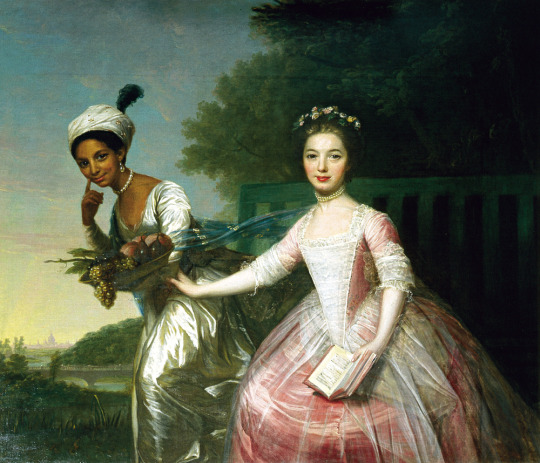
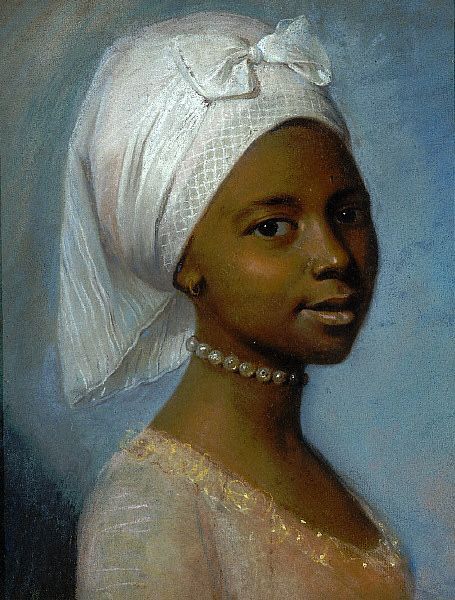
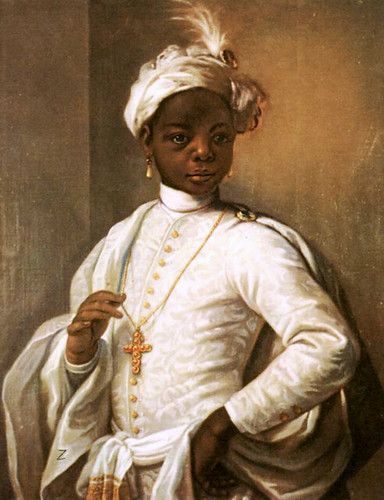
In late 18th century England abolished slavery in British Isles first, then in early 19th century in the whole British Empire, thanks to the continuous campaign of free Black people and some white allies, notably Quakers. Around the same time slavery was abolished in France (briefly till Napoleon got to power) after the French revolution. This meant there were a lot more free black people in Europe after that. In 18th century the Europeans, British especially, were colonizing Asia as much they could, which meant that in 19th century there started to also be a lot more Asian, especially Indian people in Europe. First picture below is of Thomas Alexander Dumas, who was son of a black slave woman and a white noble French man and became a general in the French revolutionary army. His son was one of the most well-known French authors, Alexander Dumas, who wrote The Count of Monte Cristo and The Three Musketeers. Second portrait is of Jean-Baptiste Belley, a Senegalese former slave, who became French revolutionary politician. Third portrait is from 1810 of Dean Mahomed, an Indian-British entrepreneur, who established the first Indian restaurant in London. Forth is Arab-Javanese Romantic painter Saleh Syarif Bustaman, who spend years in Europe. Fifth is a 1862 photo of Sara Forbes Bonnetta, originally named Aina, princess of Edbago clan of Yoruba, who was captured into slavery as a child, but later freed and made Queen Victoria's ward and goddaughter. She married a Nigerian businessman, naval officer and statesman, James Pinson Labulo Davies (sixth picture).
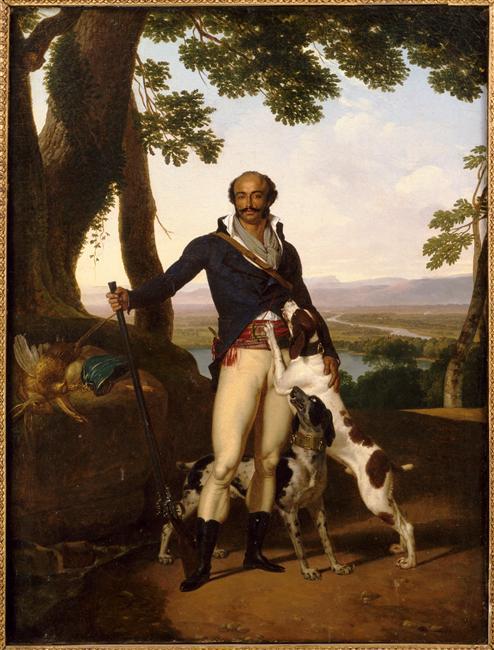


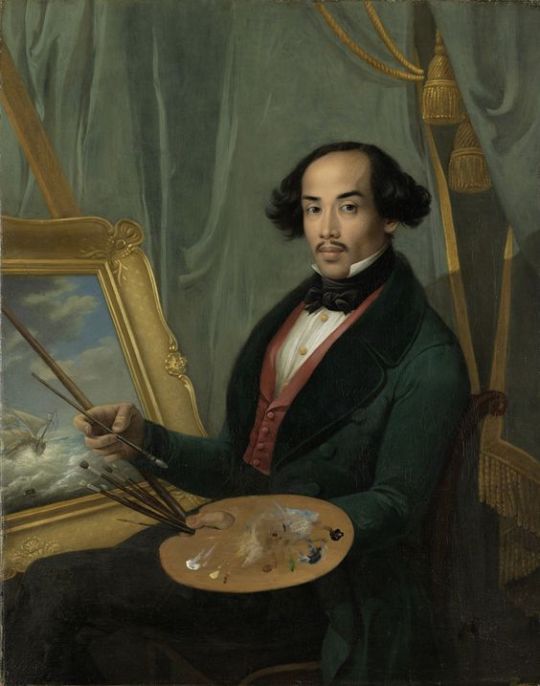
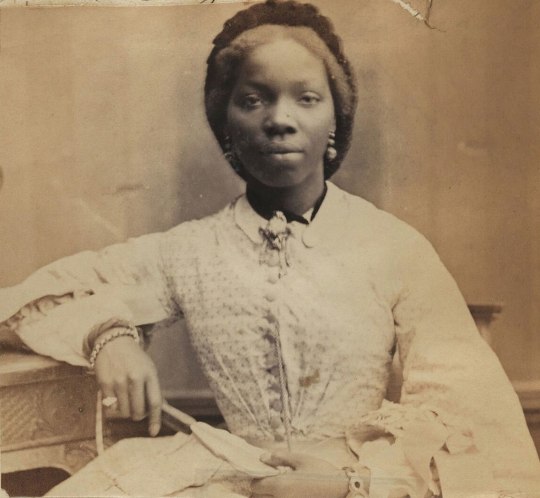
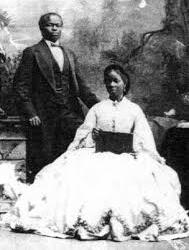
So any guesses on at what point was that "very white Europe" when the "west culture" begun? It kinda seems to me that it never actually existed.
#history#poc history#black history#historical art#european history#history of race#colonialism#racism#slavery#painting#photograph
174 notes
·
View notes
Text

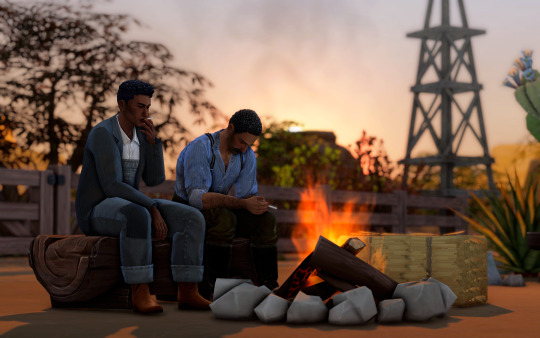

Twilight was beckoning over the horizon, battling with the sun as it sunk below the mountains. Its rays cast the final streaks of light through the sky, sending all the colors of the desert into one final blaze. Antoine rarely stayed at Abraham’s ranch this late, at least not when Zelda hadn’t taken Violette up the hill to meet him in the afternoon. But tonight Abe had besieged him with coffee and cigarettes in an uncharacteristic display of emotion; so Antoine remained, sitting with him as the first stars began to appear in the sky.
The fire was crackling in front of them and Abe seemed antsy, as though he was waiting for the comfort of night before he began speaking. Antoine knew better than to ask what the matter was, or even to be the first to speak, because when he got that way someone else’s attempts to draw the words out only made him bury them deeper inside. So he kept dragging on his cigarette, watching the fire dance as the air grew colder and the sky rapidly fell to the inevitable pull of darkness.
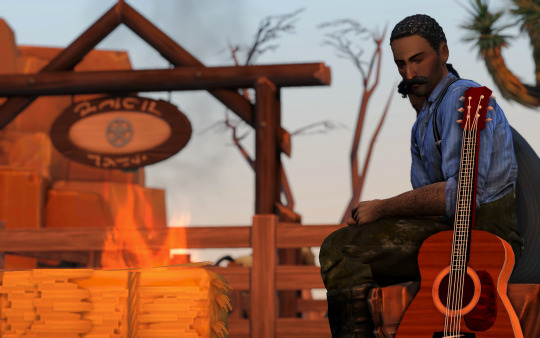
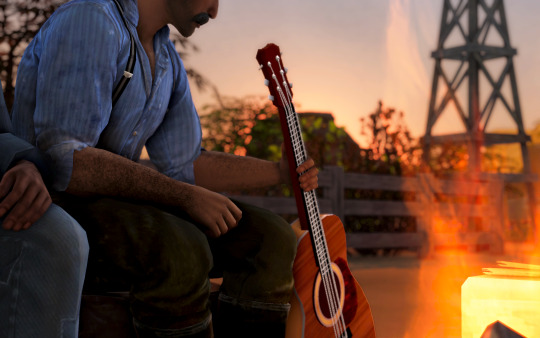

But as the final blue of daylight began to give way to a bruised purple above them, Abe threw his cigarette into the fire and brought his hand to a handle of wood near him that Antoine hadn’t noticed before. His fingers trailed on its tip aimlessly as he kept staring into the fire, “I told you my granddad came out here to herd cattle, didn’t I?” Antoine nodded his head in agreement, a gesture that wasn’t really needed for Abe to continue in a gruff voice, “Well he didn’t. Not really. That came after. He came out here to outrun the patrols after he escaped Alabama.”
Antoine kept his cigarette on his lips. He didn’t have to ask for details to know precisely what Abe meant, or the sort of pain he must have felt in saying any of this. He thought of Silver, and how distrustful she was of anyone. Only horse who ever knew my granddaddy, and he always kept her nearby.
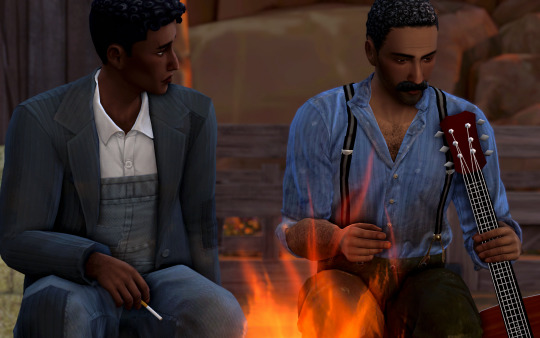

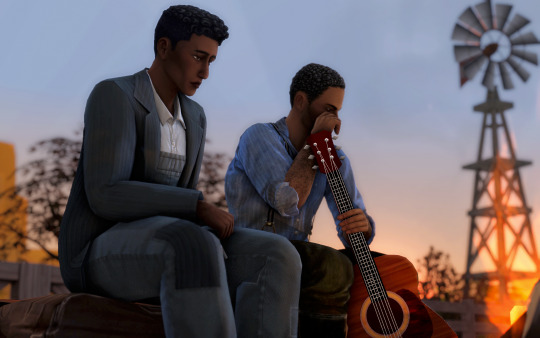
Abe’s finger ran along the wooden handle next to him and a low note escaped it. Antoine immediately recognized it as a B flat, and then realized that Abe’s hand was nervously moving up and down the handle of a guitar, “This was his. Then my Poppa’s. Only Poppa wasn’t content to stay out here. He got some idea in his head that he was meant to be a blues musician. Word after the war was it was better for us up there, so he moved me out to Chicago chasin’ some dream and false promises when I was just a boy.”
Now the words seemed to come more easily, like a song once it started or the faint dissonance echoing from the strings of a rarely played guitar that had the whole story locked inside its cavernous body. “He never gave up. Not when Momma left him. Not when I married Mabel and moved back out here with Grandad. Not ‘til the riots of ‘19 when he was just on the streets, walking alone back from a gig when the crowd found him, riled up on some horrid hatred and set on violence no matter who crossed their path…”
He stopped in his tracks and moved his hand from the guitar to wipe a lone tear from his eye. The faint sounds that had been coming from his hands on the strings settled into the loud silence of a desert twilight, filling in the ending to the story that Antoine didn’t need to hear to know.
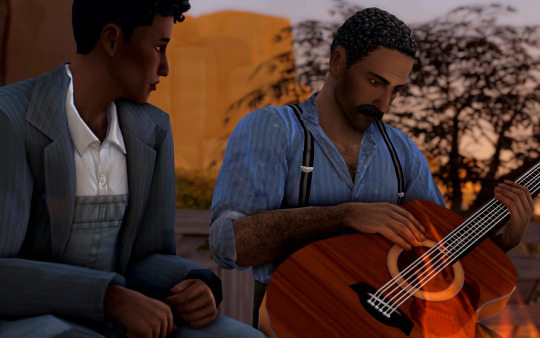


Abe seemed to purposefully pull himself back into the moment, redirecting his attention to the guitar beside him. Then he brought it onto his lap and spoke looking directly at it, as though it had a life and a mind of its own, “You know, all his life he had some hair-brained idea that I would be able to play like him; but truth is I’m no better now than when he himself tried to teach me. And if he couldn’t, nobody can.”
He stretched out his hand, offering Antoine the old but clearly well looked after guitar, “I know I haven’t been able to pay you what your work is worth, and you’re always going on about your piano back in New Orleans, so I thought this might bring you some joy. More joy than it ever brought anybody else, maybe.”

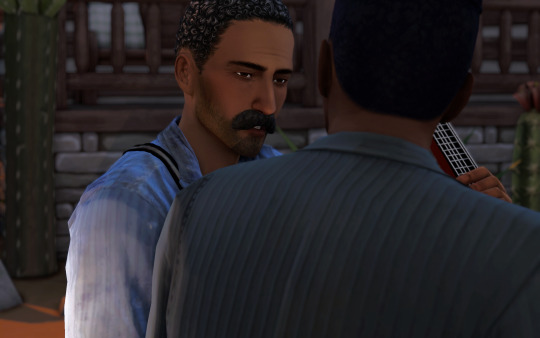
Antoine looked down at the extended instrument frightfully, because he knew it wasn’t just some guitar. It was just as alive as his piano had been, because someone had poured their very soul into it. Abandoning it had been like leaving part of himself behind, the part that had been ripped to shreds and then reassembled by the movement of the keys. He yearned for it every day of his life here, no matter how happy he was.
But the soul in the guitar before him wasn’t his memory, or his pain. It belonged to another man, one who had been parted from it in violence and hatred. “I…I couldn’t, Abe. It’s yours. It’s your father’s, your family’s. Surely it belongs with you.”
Abraham stretched his hand out further, the emotion coming back to him for a minute as his voice went raw and he dared to lock eyes with Antoine, “I insist, chap. I want somebody to play it again. Give it life, make it sing. The way he would’a wanted.”


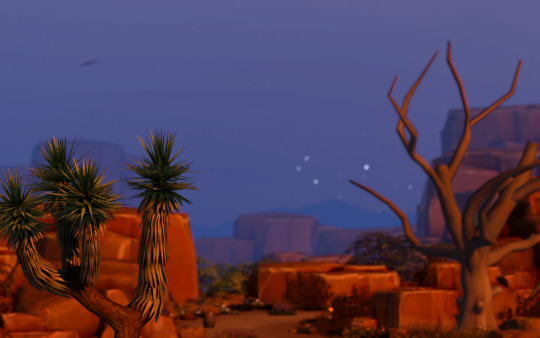

Abe inched the guitar closer to Antoine, and he moved his arms to accept the burdened gift. Because how could he say no to that? He had seen himself in Abe since the day they met, in his humor and the incessant guard he refused to let down. They spent nearly every day together, mostly talking about horses or work, somehow never with the need to show any other side of themselves. Now here he was, without armor or pretense, asking for nothing but to see some semblance of his father’s memory find life and joy again.
As Antoine settled the guitar in his lap, Abe left his hand on its neck for a moment. Then he let it fall away, moving the strings along with him as though it were saying goodbye. With his palm wrapped around them, every echoed sound moved up Antoine’s arm into his soul, as though it were speaking directly to him.
#1933#sims 4 historical#ts4 decades challenge#ts4 historical#sims 4 decades challenge#the darlingtons#sims 4 legacy#ts4 legacy#sims 4 story#ts4 story#1930s#tw racism#Antoine Duplanchier#abraham hines
114 notes
·
View notes
Text
If We Commented On Modern Fashion Videos Like We Do Historical Fashion Videos
"I mean, it's pretty, but how did you even use the BATHROOM in that?! GROOOOOOSS!!!!"
"things to wear while coughing your lungs out from COVID and wildfire smoke and trying to avoid your fascist neighbor lol"
"yikes, think about how they all had to wear Spanx two sizes too small, though!"
[video shows reasonably nice everyday clothing] "but that's just what RICH PEOPLE wore! not REAL PEOPLE!!!"
[model is a woman of color] "um sweety only WHITE women wore that back then :/"
"did you know that [confidently incorrect, absolutely insane statement about the 2020s that the poster will then argue vehemently about in the replies]"
#fashion history#historical costuming#historybounding#dress history#racism mention#to be clear the point is that if someone DARES to find a garment from the past pretty or fun or comfortable#5000 Gotchas have to come out of the woodwork#they said they like Edwardian shirtwaists Deborah. not that they want to kiss an inhumane factory owner with tongue#the present has some pretty shitty stuff going on too but you're not going to Um Actually somebody showing off#the pretty dress they just found at the mall
251 notes
·
View notes